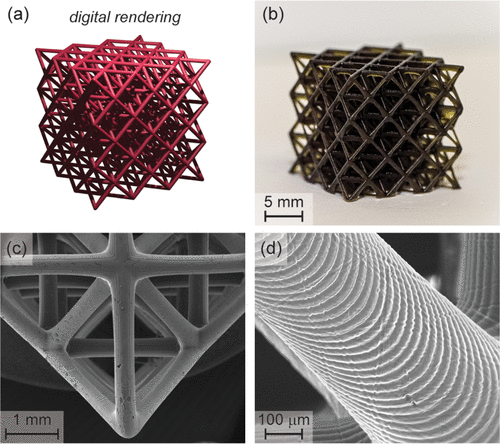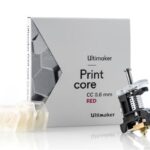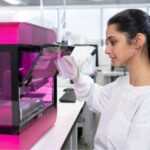

As researchers from the Department of Chemistry at the University of Texas at Austin began to expand their work in applications such as tissue engineering and soft robotics, they realized a need to explore photochemistry further to develop “novel panchromatic photopolymer resins” for better speed and higher resolution in printing. The current speed they were working with was not realistic for the types of composites, complex structures, or hydrogels that they were seeking to create, due to complicated electron transfer, slow curing times, and high irradiation intensity.
Resins were created in violet, blue, green, and red, containing the following:
- Monomer
- Photoredox catalyst (PRC)
- Two co-initiators
- Opaquing agent
The researchers relied on the PRC to promote electron transfers and consequent production of radicals, resulting in polymerization. Resolution was improved as the opaquing agent (a passive absorber) improved curing in their digital light processing (DLP) system with visible LEDs. Explaining their work in “Rapid High-Resolution Visible Light 3D Printing,” authors Dowon Ahn, Lynn M. Stevens, Kevin Zhou, and Zachariah A. Page showed that they were able to double the number of radicals produced for each photon being absorbed.
Printing with a layer thickness of 100 μm, the researchers had better results in evaluating the quality of resolution and mechanical properties. Better speed occurred with thicker layers, and their new “resolution print” was successful in offering better efficiency, speed, and resolution due to improved control in exposure time for each layer.

Dogbone samples were printed during the study, after which the researchers tested them regarding stiffness, yield strength, and strain at fracture. Ultimately, results showed that “the presence of a tricomponent photoactive system does not alter mechanical performance.” Further, they compared specimens regarding stiff vs. soft and hydrophobic vs. hydrophilic.
“Tensile testing revealed an E = 0.8 ± 0.1 MPa, which is 3 orders of magnitude lower than those from the stiff resin. Moreover, swelling tests in water for six cubes printed with either stiff or soft resin qualitatively highlight the difference in chemical makeup,” stated the authors.
“The soft cubes had a much larger water uptake (177 ± 1% increase in weight) compared to the stiff resin (54 ± 2% increase in weight), which is attributed to a combination of lower cross-link density and increased hydrophilicity of the alcohol-laden soft network.”
Along with the production of a octet truss that demonstrated complexity and functionality, the researchers concluded that mechanical and chemical properties have potential due to their versatility, and ability for using a wide range of materials in the future without involving “harmful UV light.”
[Source / Images: EurekAlert]
If you're looking to get architectural 3D animation in the USA, our service provides an exceptional way to bring your architectural concepts to life through dynamic, immersive visuals. Through our platform, you can easily request high-quality 3D animations that showcase your designs in motion, offering a detailed view of your project from multiple angles and perspectives. Whether it's for a real estate development, a commercial building, or an urban planning project, our expert team ensures that every detail is captured in a visually compelling animation.
Through our website, you can seamlessly get architectural 3D animation tailored to your project’s specific needs. With our help, you can offer potential clients or investors an engaging experience that goes beyond static images. By integrating CGI animations with real-world settings, lighting, and textures, our team creates a lifelike experience that allows your audience to interact with your project as though it were already built. This service is perfect for presenting complex designs in a clear, visually attractive way that stands out in the competitive architectural market.




